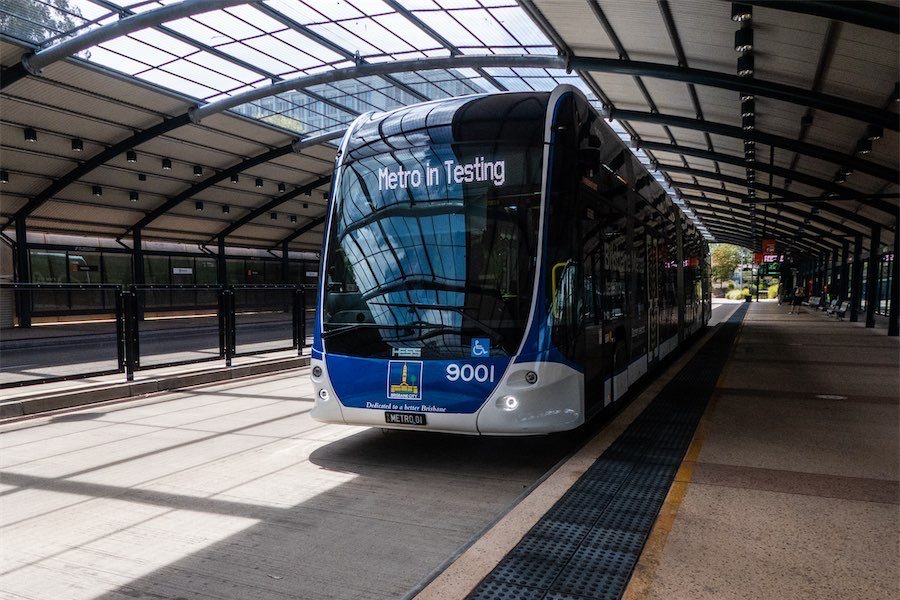
Inner-south letter writer RICHARD JOHNSON laments the tram heading south saying: “Yet to come, and extending over many years, will be the digging up of roads to lay massive foundations for the light rail track, a major new bridge over the lake and destroying all the heritage trees on Commonwealth Avenue.”
THE “Seven Days” column ( CN, December 16) outrageously suggests that the government’s “Disruption Taskforce” has been formed to “provide disruption rather than solve it”.
 But perhaps that is the only rational explanation for the promised project that will create traffic chaos for years, requires the re-importation of 60,000 cubic metres of fill, possibly from across the border where all the spoil from Light Rail Stage 1 was previously trucked to at great expense, involves the destruction of two substantial road bridges and appears to be totally unnecessary when examined closely, and of little benefit to anyone.
But perhaps that is the only rational explanation for the promised project that will create traffic chaos for years, requires the re-importation of 60,000 cubic metres of fill, possibly from across the border where all the spoil from Light Rail Stage 1 was previously trucked to at great expense, involves the destruction of two substantial road bridges and appears to be totally unnecessary when examined closely, and of little benefit to anyone.
But that’s not all! Yet to come, and extending over many years, will be the digging up of roads to lay massive foundations for the light rail track, a major new bridge over the lake, destroying all the heritage trees on Commonwealth Avenue, stuffing up the express bus services from the south, etcetera, etcetera. Oh, the wonderful disruption! How could they ever top this?
Richard Johnston, Kingston
Just a strategy to develop land
SUBMISSIONS to the National Capital Authority (NCA) on the ACT government’s application for works approval to raise London Circuit (nca.gov.au/
Submissions in favour of the application mostly expressed support for light rail or saw good outcomes for cyclists, pedestrians and active travel. There were a few favourable comments about reduced traffic or potentially safer traffic but only a couple of expressions of support for the property development intentions.
The most common criticism was of the resulting degradation of the road network, and the disruption to transport during the construction phase.
There was frequent criticism of the light rail developments and the failure to consider alternative technology. Some identified simpler ways to connect light rail between London Circuit and Commonwealth Avenue using the existing ramps.
Other criticisms pertained to the destruction of the iconic landscape/heritage features of the locale and the related developments.
A number of submissions suggested that all NCA approval requests associated with the Woden light rail stages should be considered simultaneously. Otherwise, as one submission suggested, the government might be allowed to adopt the strategy known in some industries as “salami slicing” or “creative normality”.
One could conclude that the raising of London Circuit is mainly a strategy to release land for development. Otherwise, the light rail infrastructure could be realised with far less disruption to traffic, short and long term. Providing improved amenity for cyclists and pedestrians in the latter context has not been addressed.
John Smith, Farrer
Why aren’t vets’ prices regulated?
I VERY much agree with letter writer Ross Kelly (“Vets’ business model targeted at middle class”, CN December 9) that vet services are too expensive and often out of reach of low-income people and pensioners.
I have a long history in this regard and over the years I’ve written twice to the Australian Veterinary Association to ask why vet fees are so high and there’s no other way but to pay upfront whatever they charge.
I was told that each clinic has the prerogative to charge what they think is appropriate for their services. Naturally, I thought this answer wasn’t good enough.
Through other sources I heard that one reason for the high fees is that the industry is not regulated, so I ask why?
Only lately I’ve heard of several pet insurance companies that would make a difference in providing solutions for the cash hard-ups. So after the shock of encountering a vet clinic that wanted to charge me $900 for an X-ray to my dog’s top-right gum, I’ll be considering pet insurance.
Vivien Munoz, Holt
Zed does vote in ACT’s interest
LETTER writer Barry Salisbury (“Photo shoots don’t cut it”, CN December 9) says that a senator (obviously referring to Senator Zed Seselja) who does not vote for the interests of his state or territory has no right to be in the Senate.
I believe he did in fact vote in the interests of his constituents and my reason for alluding to this is that during the same-sex marriage plebiscite, all Labor politicians in the ACT, both local and three federal, voted “yes”, one Liberal voted “no”.
It is also reported that some 70 per cent of Canberrans also voted “yes”. That leaves around 25 per cent of Canberrans who voted “no”.
So, given that the 70 per cent and Labor voted “yes” and 25 per cent voted “no”, then the senator, as a conservative, did in fact vote in the interests of the 25 per cent of Canberrans who voted “no”.
Barry, that’s democracy whether you agree with it or not because people have a choice as has the senator in question.
Ray Zak, Macgregor
A step in the wrong direction
WHILE recently in Civic, I went to the new toilets on Bunda Street on the site of what was the Koko Black café.
While it is always nice to have good new facilities, and they are appreciated, I was so disappointed to see there was a small step to be negotiated to access the toilets once inside the entrance.
Why in these times when we purport to shine a light on providing equality and access for all in the community wasn’t this made accessible to all?
I am sure they cost a lot of money and I hope that this fault can be rectified by putting in a ramp to replace the step. We must do better on this front.
Anne Stearman, Downer
Treat us with intelligence
MANY female voters, including in the ACT, would also be turned off by the Coalition’s recent loud huffing and puffing over defence and security announcements that appear to be dished up as convenient pre-election sabre-rattling distractions (“Female independents are PM’s latest ‘women problem’ ”, citynews.com.au, December 17).
The strutting men in suits ignore, at their peril, the fact that women take a broader and more practical view of what helps people to feel “safe and secure” and able to control their own lives.
From a federal perspective, the coming decade for ACT voters would be vastly improved by serious national action to address climate change and emissions reduction, the restoration of territory rights regarding end-of-life decision making and the creation of a robust integrity commission that ensures federal priorities and expenditure are set and allocated fairly, transparently and deliver value for money.
Sue Dyer, Downer
Global heating hasn’t stopped
MAX Flint (Letters, CN December 9) is wrong on several issues. “Institutions” such as Climate Watch have no intention of “sowing panic”, that would be counterproductive.
More importantly, Mr Flint clearly does not believe the mountain of evidence for global heating; the cause of climate change.
For example, despite his claim to have carried out “computer simulations”, he does not understand how they apply to the modelling of global heating. This involves direct observations, measurements of polar ice core data (oxygen isotopes), and carbon dating (carbon isotopes) for information on atmospheric composition back to a million years ago.
The following may help Mr Flint understand the science of climate change.
For almost the last million years, Earth’s atmospheric and oceanic temperatures were slowly decreasing in regular variations known as the Milankovitch Cycles, with temperatures between plus 2 and minus 8 from the longer-term mean. At the same time, atmospheric carbon dioxide concentration varied between 180 parts per million (ppm) and 280 ppm.
The long-term trend was towards another glacial period (or Ice Age). About 350 years ago, that trend quite suddenly reversed. This coincided with the beginning of the first Industrial Revolution, which was in large part driven by the burning of coal and the emission of huge volumes of carbon dioxide (CO2) into the atmosphere.
This began global heating, which has been accelerating ever since. Atmospheric CO2 level is now the highest in at least a million years.
Earth is now heating at a rate at least 10 times faster than at any time in geological history. Serious action to rein in emissions is needed urgently.
Dr Douglas Mackenzie, Deakin
Who can be trusted?
In a world of spin and confusion, there’s never been a more important time to support independent journalism in Canberra.
If you trust our work online and want to enforce the power of independent voices, I invite you to make a small contribution.
Every dollar of support is invested back into our journalism to help keep citynews.com.au strong and free.
Thank you,
Ian Meikle, editor





Leave a Reply